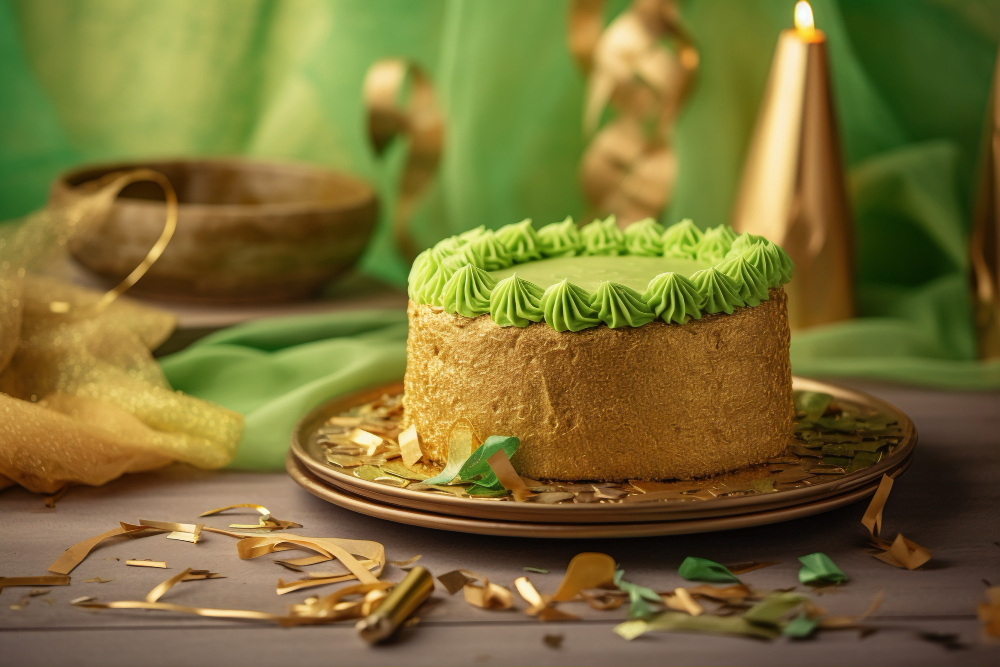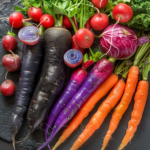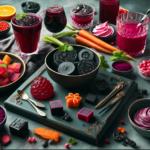Using Natural food colors for Cake decorating is an art that celebrates taste and aesthetics in equal measure. While artificial food colors have been the go-to option for creating vibrant and eye-catching cakes, the rise of health-conscious consumers and a growing interest in natural and organic ingredients has spurred a revolution in cake decoration. Natural food colors are now stealing the spotlight, offering a safer and equally delightful way to create colorful masterpieces. In this blog, we’ll explore the techniques, tips, and creative ideas for incorporating natural food colors into your cake decorating endeavors.
IMPORTANCE OF COLOR IN CAKE DECORATING
Color is an essential aspect of cake decorating as it plays a crucial role in making a cake visually appealing. It sets the mood, conveys a theme, and can turn an ordinary cake into a work of art. Natural food colors are becoming increasingly popular because they not only provide vibrant hues but also offer health benefits by avoiding artificial additives.
TYPES OF NATURAL FOOD COLORS SUITABLE FOR CAKE DECORATING
FRUIT AND VEGETABLE PUREES: Purees from fruits like strawberries, blueberries, and beets can be used to add both color and flavor to your frosting and cake batter. They provide a naturally bright and appetizing hue.
HERBAL AND PLANT EXTRACTS: Extracts from ingredients like turmeric, spinach, matcha, and saffron are excellent for creating unique and subtle shades of green, yellow, or even deep orange.
NATURAL FOOD COLOR POWDERS: Powders made from dried fruits and vegetables, such as spirulina, dried blueberry, and raspberry powder, offer intense colors and work well in dry or powdered sugar-based decorations.
VEGETABLE JUICES: Vegetable juices like carrot, spinach, or kale juice can be used for green or orange hues. They might not provide as vibrant colors as artificial dyes, but they add a natural, earthy touch.
EDIBLE FLOWERS: Certain edible flowers like hibiscus, violets, and pansies crystallized and use as delicate, natural decorations.
TECHNIQUES FOR INCORPORATING NATURAL COLORS IN FROSTING AND FONDANT
BLENDING: One common method is to blend fruits or vegetables into a puree or juice and then mix it with your frosting or fondant. Adjust the quantity to achieve the desired color intensity.
INFUSION: For herbal and plant extracts, you can infuse them in hot water or milk and then use the infused liquid as part of your cake recipe. This method works exceptionally well for flavored frostings.
COLOR POWDERS: When using powders, sift them into your dry ingredients to ensure an even distribution of color. Be mindful of the intensity of the color and add more or less according to your preferences.
CREATING VIBRANT DECORATIONS AND PATTERNS USING NATURAL FOOD COLORS
FLORAL ELEGANCE: Edible flowers like hibiscus and pansies can be use to decorate cakes with a touch of elegance. Crystallize the petals with egg whites and sugar for a stunning effect.
OMBRE AND MARBLING: Experiment with ombre or marbling effects by layering or swirling different shades of natural colors into your frosting or fondant. This adds depth and dimension to your cake.
PIPING AND STENCILING: Use piping techniques to create intricate designs, such as flowers or patterns, with your natural food color-infused frosting. You can also employ stencils to create precise and professional-looking decorations.
EXAMPLES OF CREATIVELY DECORATED CAKES WITH NATURAL FOOD COLORS
GARDEN PARTY CAKE: Decorate a layered cake with various shades of green created using spinach and matcha powder for a beautiful garden party theme. Add edible flowers and herbs for a touch of sophistication.
CITRUS BURST CAKE: Incorporate the colors and flavors of citrus fruits by using orange and lemon juice in your frosting. Create a sunny and refreshing cake that’s perfect for summer gatherings.
RAINBOW-INSPIRED CAKE: Utilize a range of natural food colors to create a stunning, multi-layered rainbow cake. Each layer can be infuse with a different fruit or vegetable puree for a vibrant and visually striking dessert.
In conclusion, natural food colors offer a healthier and more creative approach to cake decorating. They allow you to achieve stunning results while avoiding artificial additives. Experiment with different natural color sources, techniques, and designs to create cakes that not only taste amazing but also captivate the eyes. With the right knowledge and a dash of creativity, you can turn your cake into a masterpiece that celebrates both flavor and nature’s beauty.






Recent Comments